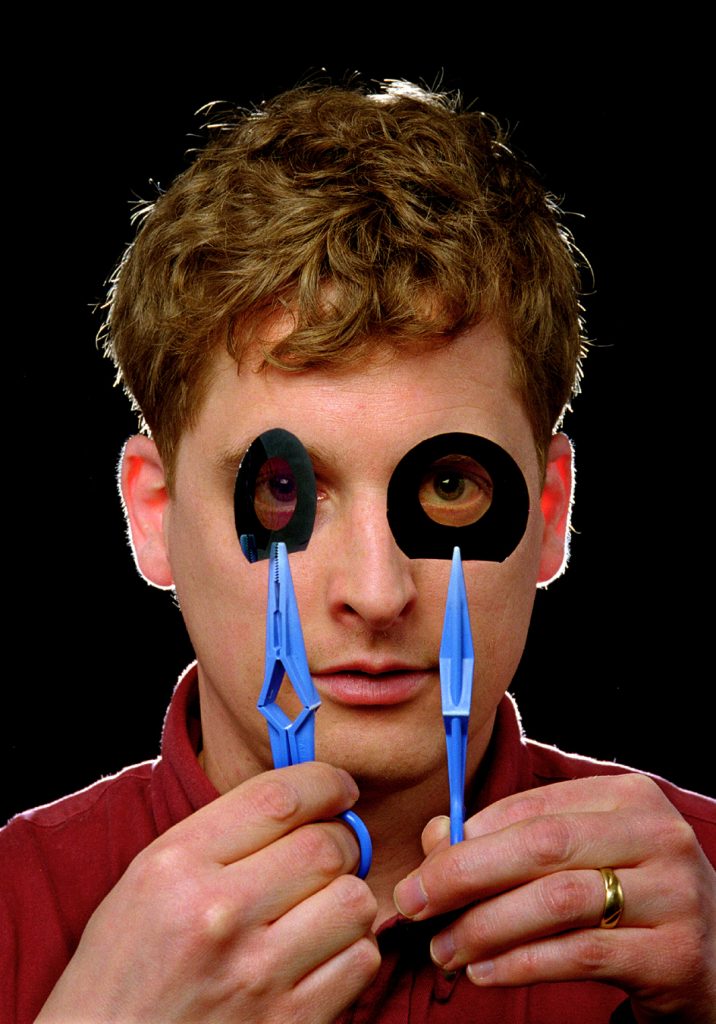
Download 150dpi JPEG image, ‘diamond.jpg’, 769K
ALBUQUERQUE, N.M. — Eliminate stress, the saying goes, and you live longer. Apparently the same is true of certain diamond coatings.
A team of Sandia National Laboratories scientists has developed a simple, inexpensive way to relieve the normal internal stresses of amorphous (noncrystalline) diamond films — a significant advance in producing wear-resistant coatings.
This should mean improved protection and extended lifetimes for metal tools, auto parts, and even plastics, such as those used in biomedical devices. The film, for which Sandia, a U.S. Department of Energy (DOE) laboratory, has applied for a patent, may be one important step in making diamond coatings commonplace.
Diamond has been used as a hard, wear-resistant material at least as far back as Pliny the Elder in ancient Rome, who used diamond shards as tools. The science novelist Arthur C. Clarke, who wrote the book 2001, predicts in his novel 2061: Odyssey Three, that in less than a century, it will be customary to protect buildings from weather damage through use of diamond coatings.
The researchers published papers on their work in Applied Physics Letters (December 29, 1997) and the Journal of Electronic Materials (September 1997). They presented talks at the Materials Research Society meeting in Boston in December 1997.
How is the Sandia coating different?
Ordinarily, amorphous diamond films contain very high levels of compressive stress, equivalent to a pressure of 70,000 atmospheres within the plane of the film. These high levels of stress cause the film to peel off its substrate, which limits the film’s thickness, and also makes it impossible to create large-area free-standing membranes — coatings without substrates — that could serve as transparent windows for X-ray or electron optics.
The new material enables the creation of thick, stress-free, amorphous diamond coatings, never before successfully achieved. The stress-free coatings are harder than any known coating, except for crystalline diamond.
Because they are stress-free, the coatings have also been used to create very thin, large-area, free-standing membranes.
“The stress-free coatings represent a major advance over other types of diamond coatings,” says Sandia researcher Tom Friedmann, who with Sandia colleague John Sullivan, originated the stress-relief technique.
Unlike crystalline diamond coatings, which require high temperatures to deposit and have very rough surfaces, the stress-free coatings are deposited at room temperature and are extremely smooth. “Furthermore, these stress-free coatings are almost identically as hard as the crystalline films,” says Friedmann. These coatings are also much more stable than amorphous diamond films that contain hydrogen — industry’s most common hard carbon coating. As Friedmann points out, “Diamond coatings that contain hydrogen tend to degrade at temperatures as low as 200 degrees Celsius. The stress-free coatings show negligible degradation up to 800 degrees Celsius.”
Ultrahard, chemically inert
To date, the team has made stress-free films more than seven microns thick, has applied the thick coatings to plastic substrates, and has made free-standing membranes more than one inch in diameter and less than 600 angstroms thick. One angstrom is about equal to the diameter of a carbon atom. Because the films are stress free, deposition to almost any thickness is conceivable, and the researchers believe they could easily create even larger, thinner membranes.
Measurements show that the amorphous diamond coating is 90 percent as hard and stiff as crystalline diamond, the hardest known material. The films have other desirable properties as well — they are wear resistant, have a low coefficient of friction, and are inert to almost all chemicals, which makes them suitable for use in harsh environments.
An additional feature, says Sullivan, is that “we not only can eliminate stress but we can control it. We can make a tensile film — a film that wants to contract and pull taut like a drumhead. This is important for making membranes.”
How is it made?
The process uses a pulsed laser on a graphite target to deposit, at room temperature, an amorphous carbon film with a high percentage of diamond-like bonds but with high initial stress.
“Then,” says Friedmann, “we discovered that when the deposited material is heated, these films lose their stress, yet retain their diamond-like properties. In contrast, amorphous diamond films that contain hydrogen convert to graphite upon heating.”
“The stress relaxation that occurs in the stress-free coatings is uniquely different from other types of stress relaxation we have seen in the past,” says Sullivan. The process seems to involve short-range bond rearrangement as opposed to long range atomic migration which occurs in many other materials. “The surprising thing is that the hardness seems to be unaffected by the subtle rearrangements,” says Friedmann.
The work is funded by Sandia’s Laboratory-Directed Research and Development program for leading-edge, proof-of-principle research. DOE funds are used to continue development.
Companies interested in joint development of the material should contact Sandia’s Technology Partnership Center at the number listed below for industrial contacts. Sandia is a multiprogram DOE laboratory, operated by a subsidiary of Lockheed Martin Corp. With main facilities in Albuquerque, N.M., and Livermore, Calif., Sandia has major research and development responsibilities in national security, energy, and environmental technologies.
Industry contact:
Craig Sheward, cshewa@sandia.gov, (505) 843-4159
Technical contacts:
Tom Friedmann, tafried@sandia.gov, (505) 844-6684
John Sullivan, jpsulli@sandia.gov, (505) 845-9496